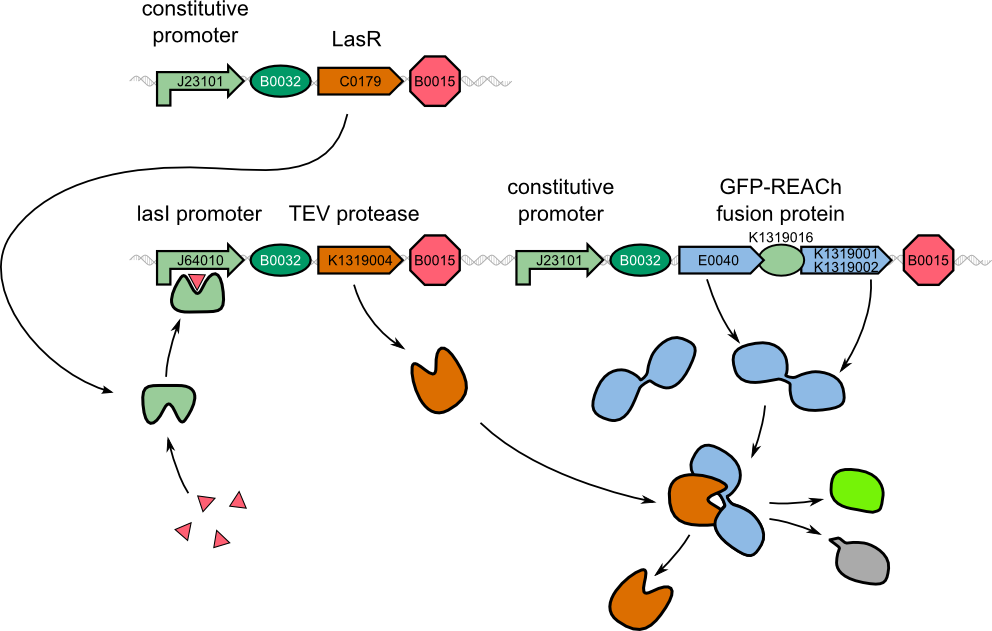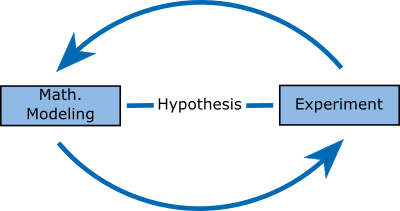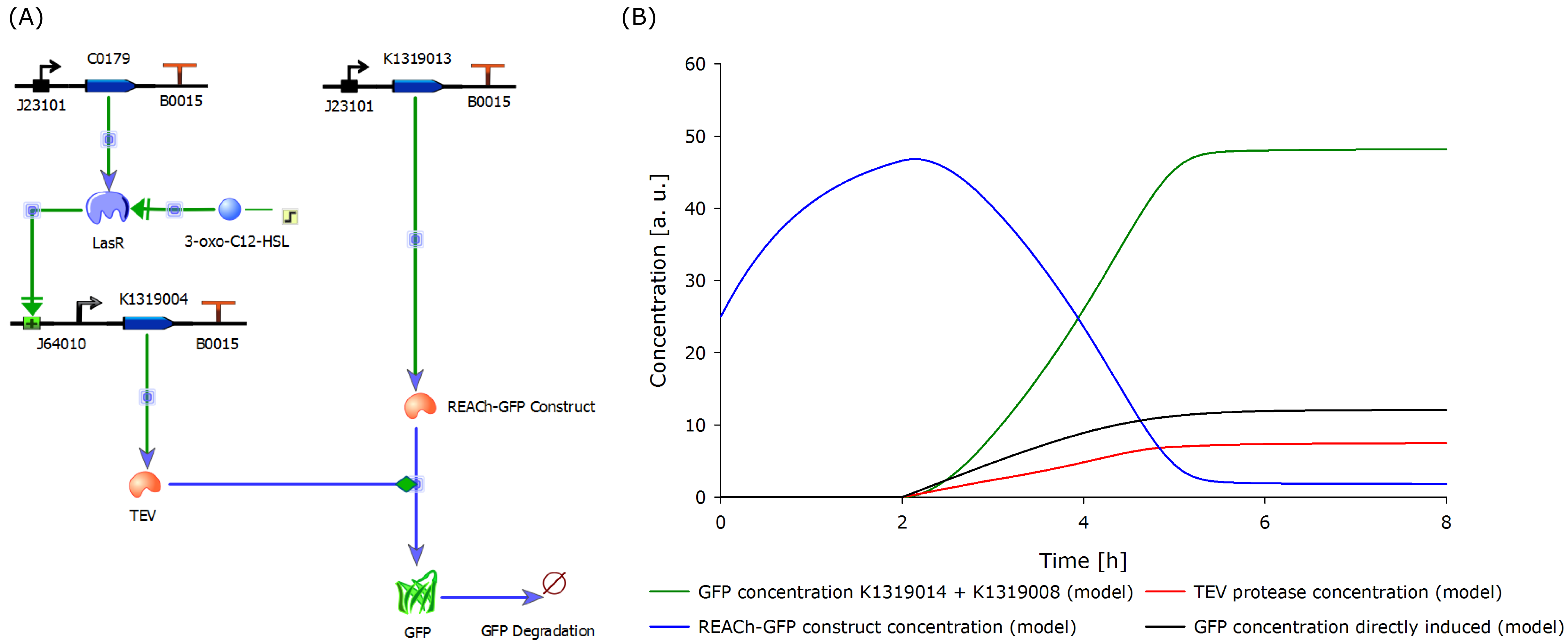Team:Aachen/Project/Model
From 2014.igem.org
(→Modeling) |
(→Modeling) |
||
| Line 15: | Line 15: | ||
For our two-dimensional biosensor, we thought of different methods to generate a faster and stronger fluorescent response from weak promoters. In our molecular approach (left) to detect ''P. aeruginosa'', a fusion protein of GFP and the dark quencher is cleaved by the very specific TEV protease which is introduced behind the weak quorum sensing promoter. | For our two-dimensional biosensor, we thought of different methods to generate a faster and stronger fluorescent response from weak promoters. In our molecular approach (left) to detect ''P. aeruginosa'', a fusion protein of GFP and the dark quencher is cleaved by the very specific TEV protease which is introduced behind the weak quorum sensing promoter. | ||
| - | To validate our hypothesis, we developed a model of our molecular approach using the CAD tool TinkerCell (Chandran, Bergmann and Sauro, 2009). | + | To validate our hypothesis, we developed a model of our molecular approach using the CAD tool TinkerCell, see figure below (Chandran, Bergmann and Sauro, 2009). |
| - | + | ||
| - | + | ||
| - | + | ||
<center> | <center> | ||
| Line 24: | Line 21: | ||
</center> | </center> | ||
| + | |||
| + | To compare the response time of the fluorescence signal between our theoretical system and a traditional biosensor, we included a direct expression of GFP in the same plot (below). In the results shown below, the strength of the promoter used for the direct GFP expression (traditional approach) is even twice as high as the strength of the promoter upstream of the TEV coding sequence in our new approach. Despite the weaker promoter, a '''higher GFP concentration is generated in the model of the novel biosensor''', predicting a quicker response time of our system. | ||
The model predicted that our approach should be an improvement over the commonly used direct expression, so we proceeded with the clonings and assembled plasmids to test the system. | The model predicted that our approach should be an improvement over the commonly used direct expression, so we proceeded with the clonings and assembled plasmids to test the system. | ||
Revision as of 23:51, 17 October 2014
|
|
 "
"



